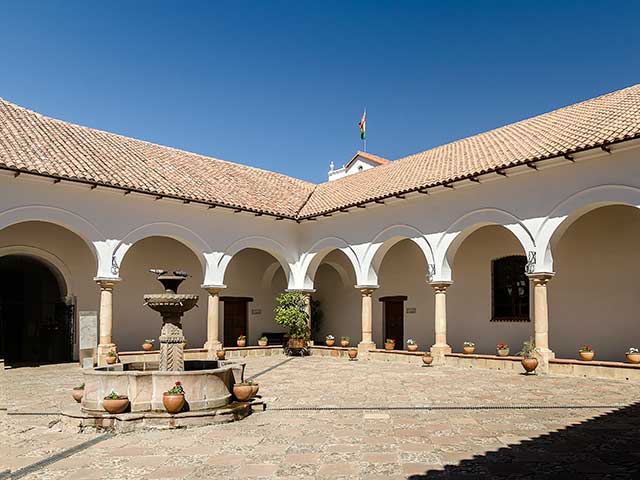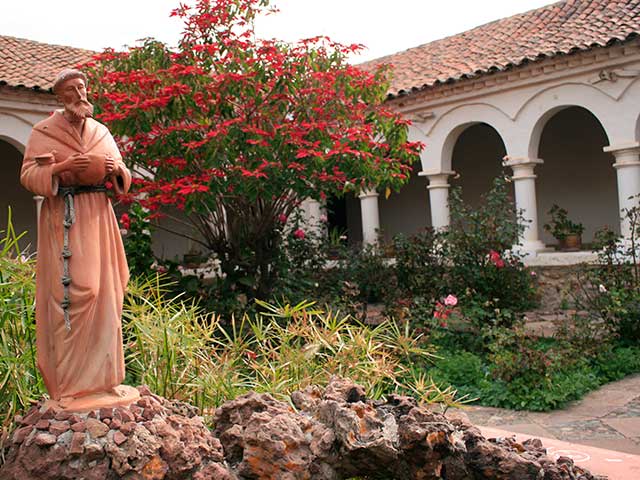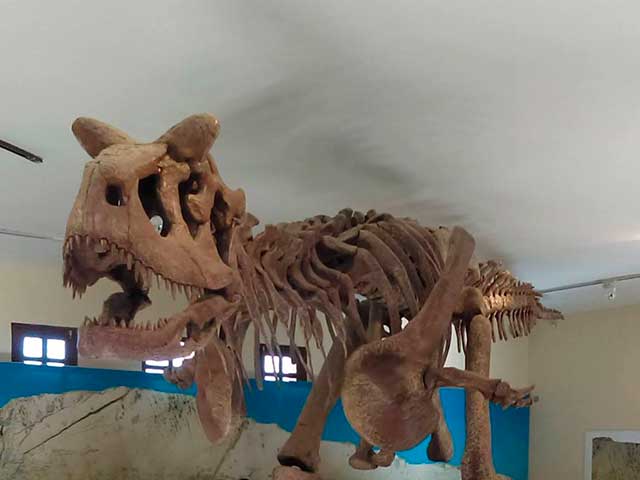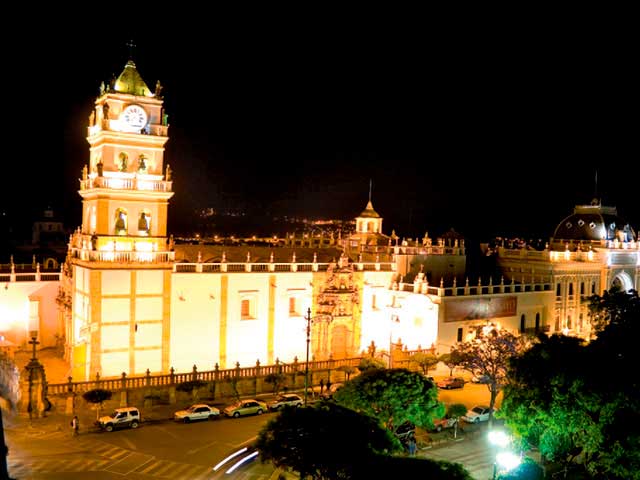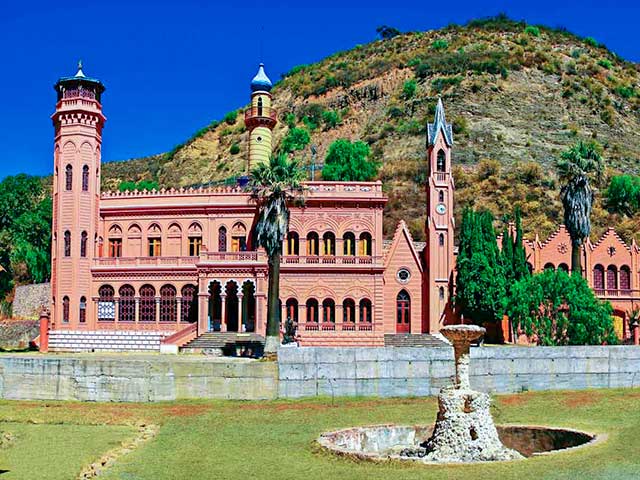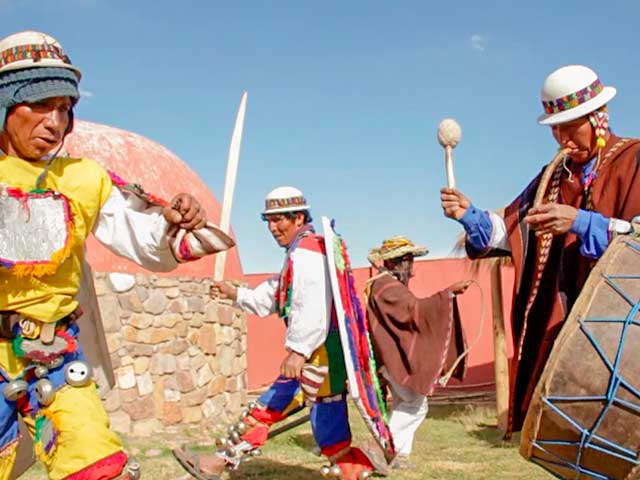Learn spanish visiting Sucre
In 1987, Sucre was designated as a "Cultural Heritage of Humanity" by UNESCO. Sucre is a beautiful colonial judicial capital located in the Andean highlands of Bolivia. It is known as the "White City of the Americas" due to its numerous colonial buildings, all of which are painted in white and topped with shiny red tile roofs.....
Sucre
In 1987, Sucre was designated as a "Cultural Heritage of Humanity" by UNESCO.
Sucre is a beautiful colonial judicial capital located in the Andean highlands of Bolivia. It is known as the "White City of the Americas" due to its numerous colonial buildings, all of which are painted in white and topped with shiny red tile roofs. Set in a valley surrounded by low mountains, Sucre is small (pop. 250,000) and thus easy to explore on foot.
A university town known as the center of learning and progressive thought within Bolivia, Sucre has many museums, a lively central plaza, shops and restaurants. The city has a youthful, energetic feel despite its old-fashioned look created by the numerous old mansions and colonial churches.
This charming colonial city and its nearby villages feature a sizable indigenous population who maintain their customs and colorful dress. Locals and visitors alike are attracted to the markets where food, textiles and other products are sold in barter fashion. Nearby Potosi, which was one of the most important silver mining centers in the world with the largest and richest population in 17th century Latin America, is an integral part of Bolivian history.
Casa de la Libertad
It is the first historical monument of Bolivia, place where it was signed the Act of the Independence of the “Alto Peru” in 1825. The place where it was drafted the first Constitution of Bolivia and was born in the Republic of Bolivia.
It is still a civic-cultural space, symbolic and emblematic where the main ceremonies in the country are carried out.
It is located in “Plaza 25 de mayo”, in the Centre of the Sucre city, capital of Bolivia.
Opening hours:
Tuesday to Saturday: 9:00 to 12:30 and 14:30 to 18:30
Sunday: 9:00 to 12:00
Monday: closed
Entrance price:
National: 10 Bs.
Foreigners: 15 Bs.
Right to camera: 10 Bs.
La Recoleta
It is a Franciscan Monastery located on the slopes of Cerro Churuquella.
Inside the Museum you can see on display several colonial and Republican paintings, sculptures, jewellery works, numismatics collections and archaeological remains.
Within its bibliographic heritage boasts a sumptuous library of 20,000 titles with a diversified thematic. The famed choir stalls carved in Cedar wood by Juan Pérez de Villarroel (XVII century) is part of this museum.
In the tour of the Museum you can see the Orchard which was initially a grove of cedar trees. Today remains the majestic ancient tree witness of the colonial and Republican history of the Sucre city.
Opposite the Church, is the wide plaza and a viewpoint from where you can see the entire city.
Address: 162 Polanco Street.
Visit days: Monday to Friday: 08:30 to 12:00 / 14:30 to 17:30, Saturday 15:00 to 17:00.
Phone number: +591 4 6451987
Parque Cretácico
A few minutes from the Sucre city, is the most extensive site of dinosaur footprints in the world.
The imposing cliff of Cal Orck'o ' or (lime mountain) reveals secrets of various species of these fabulous animals, lost 68 million years ago.
Around 5.055 dinosaur footprints of at least 8 species. 581 meters of continuous walking of a theropod, distance that represents a world record and 462 continuous individual walks are combined on a cliff of 1.500 meters long by 110 meters high. They are kept harmless at the time.The CRETACEOUS Park shows replicas, flora and fauna of the last period of the dinosaurs that existed in South America, made to full-scale by expert sculptors under the scientific direction of paleontologists.
Among the most outstanding sculptures is the impressive titanosaur of 36 meters long and 18 meters high to becoming the world's largest dinosaur sculpture.
Opening hours:
Tuesday to Friday: 09:00 to 17:00
Saturday, Sunday and holidays: 10:00 to 18:00
Visit to the tracks: 12:00 and 13: 00
Entrance price:
Nationals: 10 Bs. / children: 5 Bs.
Foreigners: 30 Bs.
Catedral Metropolitana
The Metropolitan Cathedral of Sucre is located in the Plaza 25 de Mayo.
Its construction began the year 1551 and continued for nearly two centuries after several reconstructions and expansions.
The building is an architectural complex with sacristies and chapels annexed corresponding to the various stages of its construction.
The temple has a mixture of architectural features of Renaissance, Baroque, neo-Gothic and neoclassical styles.
In a sector of the Cathedral runs a Museum of sacred art (Cathedral Museum) one of the most important in Bolivia. Because of this prolonged construction period, combines a Baroque and Renaissance style with mestizo influences.
Mass schedule:
Thursday and Sunday: 9:00 am
Castillo de la Glorieta
The Glorieta castle is located about 5 kilometers from Sucre city. Unique in its style, is one of the most curious buildings of the Republican period, collecting Gothic, Mannerist, Baroque, Rococo, neoclassical and Mudéjar styles.
The history of the castle is about Don Francisco de Argandoña’s wife: Mrs. Clotilde Urioste of Argandoña who could not have children. That is why they had the idea of adopting orphans, build the Castle and give them a place to grow.
For this charity work, Pope León XIII awarded him the title of “Prince of the Glorieta” in 1898 and thus the castle received its name.
This fascinating place has rooms full of history and art, extensive gardens that emulate the European palaces, the Chapel and the Prince's tower which has a beautiful view of the landscape of the place.
Opening hours:
Tuesday to Sunday, from 9:00 until 16:30.
Entrance price:
Nationals: 10 Bs / children 5 Bs.
Foreigners: 20 Bs.
Right to camera: 10 Bs.
Distrito 8
The District 8 is located in the Oropeza province of the Department of Chuquisaca.
Maragua is a community located within the Municipal 8th district, 60 km from the city of Sucre. It has a winding and hilly landscape.
The crater of Maragua, curious geological formation, is nestled in a round shape that covers approximately 20 km. simulating a sort of shell which ends with orographic scales with different colors that belong to the Mesozoic era.
The town of Potolo is the most important of district 8, 62 km from Sucre city, where you can find colorful fabrics made by locals and cave paintings.
In district 8, there are 37 communities and five subcentralias, which are distributed in five cantons: Potolo, Maragua, Chaunaca, Mama Huasi and Quila Quila.
In its generality, it is characterized by being of Jalq'a culture, and the other part corresponds to Ch' uta culture.
